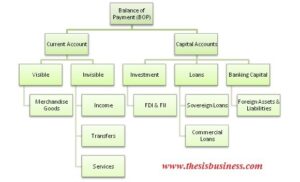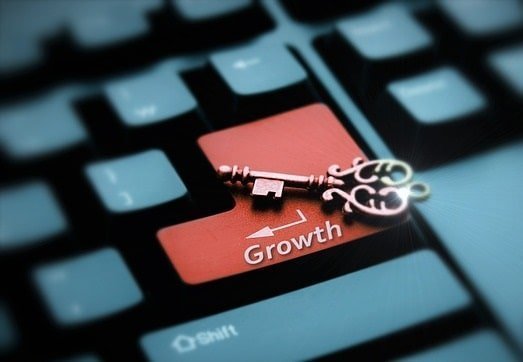Balance of Payment (BOP):
“A Balance of Payment (BOP) of a country refers to an account that records each monetary transactions between the residents of that country and all other countries during a stipulated period of time. These monetary transactions/ economic transactions can be done by an individual, enterprises, or government of the country”.
In other words, a Balance of Payment is the statement of country’s exports and imports whether it is of goods or services or assets during a certain period of time, usually, this time period is of one year.
The BOP statement facilitates to monitor the cash inflow and outflow in the country. If the country’s exports are greater than its import, there should be a surplus of foreign currency vice versa if the country’s export is less than its import, there is a deficit of foreign exchange. These scenarios are known as BOP surplus and BOP deficit respectively.
Ideally, the difference between total inflow and total outflow of foreign exchange a country should be zero and this condition is known as Balance of Payment Equilibrium, however, it is hard to achieve for the government of any country. If the net outflow and inflow of foreign exchange are either positive or negative, this situation is known as Balance of Payment Disequilibrium (BOP Disequilibrium).
The central government’s endeavour is always to implement its monetary policy and fiscal policy so that the Balance of Payment Equilibrium can be achieved.
If the export of a country is higher than its import, which is the sign of the healthy economic condition of the country because more exports mean more demand of foreign currency which leads to a significant increase in the country’s currency.
The Government formulates various policy to promote exports to recover BOP deficit as well as to appreciate its currency exchange rates. Some times the government itself devalues its domestic currency to restrict the import and encourage export across the world.
The BOP is maintained by the Central Bank of a country with respect to the denomination of $ (Dollar), in the case of India, it is maintained by the Reserve Bank of India (RBI).
Significance of Balance of Payment:
- The BOP statement helps in evaluating the economic conditions of a country.
- It facilitates the Government to formulate the fiscal policy and various schemes to control inflation and money supply in the economy.
- It facilitates establishing the exchange rate of domestic currency with respect to other currencies.
- BOP helps the government to take necessary measures in case of a recession period.
- Since BOP is maintained by the central bank of a country, hence it helps the central bank to formulate and implement the Monetary Policies across the country.
- Since BOP is the details statement with specific entries, hence it facilitates the government to understand where the necessary actions and measures have to be taken.
Components of Balance of Payment:
 |
| BOP Components |
The BOP records the various financial, economic and trade transactions. The BOP statement is classified on the basis of nature of transactions which are named as components of the balance of payment.
Current Account:
The current account records all visible and invisible international transactions (export and import) such as merchandise goods/ physical goods/ commodities and services made across the country with other countries.
The visible transactions include goods or commodities/ products such as crude oils, raw materials, finished products, gold, accessories, cars etc whereas invisible transactions include various services, income and international transfers.
The current account also records unilateral transfers between two countries as well as Factoring income and expenses by the residents of domestic and foreign countries respectively.
Balance of Trade (BOT):
The following transactions are recorded under the current account. To clarify the meaning of Balance of Trade (BOT), we must understand, what are the merchandise goods/ physical goods?
Merchandise goods:
Merchandise goods/ physical goods list under the visible transaction which can be seen and felt physically. The export and import of merchandise goods are recorded under the current account.
Some examples of these types of are raw material, finished goods, machinery, electronic gadgets, accessories, gold, automobiles, crude oil, computer hardware, plastics, iron etc.
In other words, the inflow and outflow of foreign exchange due to export and import of these products/ items are entered in the current account separately.
The difference between a country’s net export and net import during a certain period of time is called Balance of Trade (BOT) or Trade Balance.
If the net export of a country is greater than its net import, this scenario is termed as Trade Surplus. On the other hand, if a country’s export is less than its import, this scenario is termed as Trade Deficit.
Services:
The various services are listed under invisible transactions. Few examples of services are tourism, engineering services, royalty from music, movies, software, patent products, brokerage services, construction works and other types of services are also entered in the current account.
Income:
Income from various sources such as foreign investment, factoring earnings, dividends and interest earned are also recorded under this account.
Transfers:
The international transfer whether it is made by an individual, corporates or the government for any purpose such as donation, remittance, unilateral transfers, gifts, personal transfer between friends and relatives will be recorded in this account as well.
Capital Account:
The capital account records the inflow and outflow of foreign exchange due to assets purchase or sales in the international market. This includes real state and infrastructure projects, Foreign Direct Investment (FDI), Foreign Institutional Investment (FII), sovereign and commercial loans, banking capital etc.
Let me explain each one by one.
FDI & FII:
FDI &FII refers to the foreign investment made by an individual or a company or the government of a foreign country for any purpose. These investments are treated as the inflow of foreign exchange for the country. These types of transaction are deals in the capital account.
Sovereign and Commercial Loans:
Typically, the government or corporates of a country takes loans (raise funds) from a foreign country or lend to a foreign country and if it is done by the government will be known as Sovereign and if done by a business enterprise by floating shares in abroad will be known as commercial loans.
This causes an inflow or outflow of foreign currency with respect to the domestic currency and hence deals under the capital account.
Banking Capital:
Banking capital consists of two elements such as foreign assets and foreign liabilities of commercial banks. The foreign asset includes the net foreign currency reserves and domestic currency overdraft to a non-resident bank while foreign liabilities of commercial banks include mainly redemption of various non-residents deposit schemes.
These components of baking assets and liabilities are also summerise in the capital account.
Final Words:
Hope you would have clarified the concept and importance of the balance of payment (BOP). In a nutshell, it can be summarised as any private organisation or public sector units whether it is a small or big organisation have to maintain its all transactions (Cash inflow and outflow), assets and liabilities in form of balance sheet. In the same way, a country summarises all its transactions in the record book which is termed as Balance of Payment (BOP).


It was very helpful ☺️